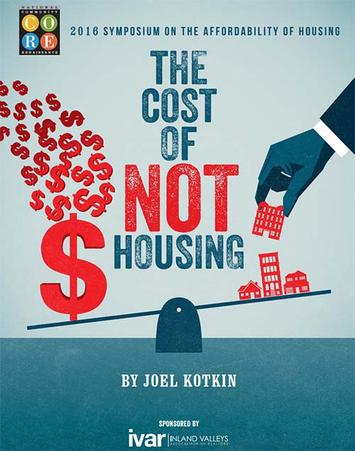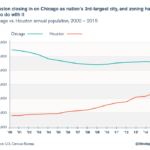California regulations price middle class out of midlevel homes: Wendell Cox
By Wendell Cox

Wooden frame of a new house under construction
There is a serious housing affordability crisis in both California and San Bernardino County, and it goes beyond the intractable shortage of affordable housing for low-income households. As a result, middle-income households simply cannot afford middle-income houses. Much of the problem, as the Legislative Analyst’s Office (LAO) has concluded, has to do with overly restrictive land use and environmental regulation. The LAO estimates that houses cost approximately 150 percent more in California than the rest of the nation.
For 12 years I have co-authored the Demographia International Housing Affordability Survey, which covers more than 350 metropolitan areas in nine nations. Based on historical data, we rate housing affordability using a ratio called the Median Multiple, which divides the median house price by the median household income. Housing is affordable if it is 3.0 times (or less) household income. When the Median Multiple is above 5.0, housing is rated as severely unaffordable. Among virtually all of the severely unaffordable international markets (from Hong Kong to Sydney, Vancouver to the Inland Empire) there is prohibitive land use regulation. Likewise, housing is severely unaffordable in all five of California’s metropolitan areas with more than 1 million population, including the Inland Empire which has a 5.2 median multiple, more than 60 percent above the affordable 3.0 median multiple.
Surprisingly, construction costs in California (labor and materials) are similar to other parts of the nation before you factor in government regulations. For example, a 2,000-square-foot home in San Jose (the least affordable metropolitan area in the United States) is only 9 percent higher in costs (before factoring in government regulations) than in Indianapolis (one of the most affordable metro areas). However, the growing affordability gap between California (ranked 49th in homeownership) and other states is due to severe restrictions and regulations on housing development, which drive land prices up just as gasoline prices rise when OPEC tightens supply.
Sadly, new starter homes, which begin as low as $125,000 in other markets in the United States simply do not exist in San Bernardino County and most of California. Not surprisingly, many Californians are leaving. Since 2000, a net 1.75 million people have moved out of California to neighboring states with better housing affordability.
There are significant consequences to California’s housing affordability crisis. California has the highest poverty rate in the nation when adjusted for housing costs (21.8 percent), greater than perennially high-poverty states such as Texas (15.9 percent) and Mississippi (15.3 percent). When adjusting for housing cost, San Bernardino County’s poverty rate has ballooned to 19.5 percent, the fifth highest in the state.
There’s also great economic opportunity by addressing California’s housing shortage. According to the National Association of Home Builder’s National Impact of Home Building model, building 1,000 average single-family homes generates 2,975 jobs and $111.0 million in taxes and fees for all levels of government. Similarly, building 1,000 average rental apartments generates 1,133 jobs and $42.4 million in taxes.
Some proposed solutions are simply hopeless. Jurisdictions are trying to provide more low-income housing through inclusionary zoning, which requires home builders to provide low-income housing to get permission for building market-rate housing. The LAO has noted that there is little potential to meet the affordable housing need through such draconian strategies. Moreover, the costs of these low-income units are added onto the price of the market-rate new housing.
The best hope for housing affordability relief is reform, both in land use regulation and environmental regulation, such as CEQA (California Environmental Quality Act). Local government also has a significant role in helping to address the growing housing shortage. A commitment by cities to ensure an efficient permit approval processes can reduce the costs associated with unnecessary delays. Cities, school districts and water districts should also carefully consider the impact on the local economy and poverty level before considering any fee increases for new housing.
California’s affordability gap could worsen significantly if voters do not approve a new $9 billion school bond measure this November. Failure to pass this vital bond could mark the end of a two-decade-long successful public/private partnership to fund new school facilities, and place the entire burden on aspiring homeowners. For example, if the school bond is not passed, local school fees could skyrocket upward to $20,000 per home in San Bernardino County, adding to the $40,000 in fees already paid for each new home. This outcome would only further intensify San Bernardino County’s housing shortage, which is projected to reach 65,000 homes by 2019.
There are few, if any, domestic priorities above improving the standard of living and alleviating poverty by addressing the housing needs for our growing population. Yet, California’s housing policies have done serious damage to the standard of living, while increasing poverty. Clearly, the time has come for elected leaders to make housing a top priority in the Golden State.
Wendell Cox is a senior fellow with the Center for Opportunity Urbanism and was appointed to three terms on the Los Angeles County Transportation Commission. He consults on housing and land use issues.
This article was originally published by the San Bernardino County Sun on 6/28/2016








